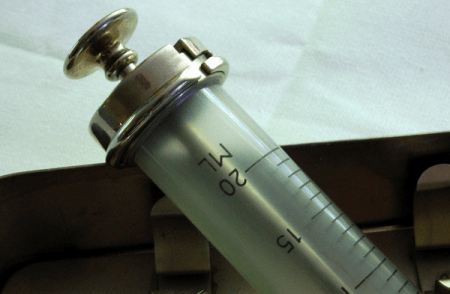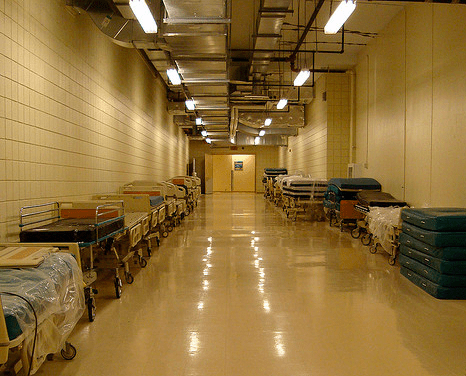Kamilia Khairul Anuar puts forth a simple argument for ‘mercy killing’ by pointing out the fallacies that surround society’s general distaste for it.
Euthanasia is actually an umbrella term for the general actions (assumed to exclude violence and, hence, be painless) that result in the loss of another person’s life, without malicious intent. It is typically done with the intent of ending a person’s suffering, i.e. ‘mercy killing’.
While only the word ‘euthanasia’ is used within the everyday context, the case is different in the legal one where a significant distinction is made between passive euthanasia and active voluntary euthanasia (henceforth referred to as a single category called ‘active euthanasia’ in this article), which is probably the kind of euthanasia most people refer to when they mention or talk about ‘euthanasia’.

To make things easier, passive euthanasia generally refers to the act of withdrawing life support from a terminally ill patient, indirectly hastening their death as a result. Active euthanasia, on the other hand, refers to a conscious decision made by patients themselves to terminate their own lives, perhaps with the aid of a physician, typically via the administration of a lethal dose of drugs.
The former is legal, while the latter is chargeable for murder or culpable homicide.
Given the fact that both types of euthanasia have the same end result – the death of a patient – this may seem a tad hypocritical. Why does the law distinguish between the two, providing sanctions against one while allowing the other?
“Euthanasia – A Malaysian Perspective” by Norchaya Talib draws comparisons between the viewpoints of Malaysian and English society regarding both types of euthanasia and other matters relating to it, such as advance directives (basically a notation in an individual’s will stating that given the stipulated conditions, they wish for life support to be withdrawn); and the administration of double-effect medication (painkillers such as morphine, while alleviating pain, may have unintended consequence of shortening a patient’s lifespan depending on the dosage and frequency of administration).
The research published in the book, comprising surveys from a sample of target populations (physicians, nurses, patients themselves and the general public), reveals an intriguing distinction between the attitudes of society towards certain aspects of medical practice.
For instance, the concepts of patient autonomy and their right to know the exact nature of their illness, as well as the treatments used, are more highly-prioritised in England than it is in Malaysia. It was found that physicians in Malaysia typically chose not to reveal the true nature of their terminally ill patients’ conditions to the patients themselves. Instead, the relatives would typically be informed, and they would then decide whether or not they wanted to inform the patient. The reason these physicians gave for withholding information? They did not want to emotionally upset the patient in case a full revelation of the dire nature of their condition would hinder recovery.
The book also highlighted that both England and Malaysia opposed active voluntary euthanasia. The types of arguments to justify the outlawing of active euthanasia may be summed up into two categories: secular and religious.
Secular Reasons Against Active Euthanasia
Reasons against the legalization of active euthanasia tend to involve the ‘slippery slope‘ argument, namely that allowing active euthanasia would leave the doors open for it to be abused. It is feared that patients may frequently request to be euthanized and these requests would be too easily granted. Or that, unless it can be proven that their actions were done with the victim’s consent, murder may be disguised as active euthanasia since legalizing it absolves the individual of responsibility for the loss of another’s life.
Another argument put forth is that people rarely ever truly wished to die, and that a primary reason why such requests would crop up is that patients lacked emotional support and comfort. Therefore, they felt neglected and depressed, suffering pain without the compassion required to motivate them. Malaysian physicians reported that these requests ceased or reduced in frequency whenever effort was made to improve the patients’ emotional condition.
Religious Reasons Against Active Euthanasia
There is actually a section in the book devoted to summaries of each of the more common Malaysian religions’ reasons for prohibiting active euthanasia. These include general Muslim, Christian, Buddhist, Hindu and Sikh views, all of which arrive at the same conclusion that active euthanasia is forbidden. The view these religions share is that life is granted by a higher power, and, hence, not owned by humans. As such, humans should not ‘play God’ and toy with human lives because only the higher power should decide in matters of life and death.
Now that we’ve gotten that out of the way, we must return to the original question: how is one type of euthanasia illegal while the other is not, given the fact that they both essentially have the same end result and both have potential to be abused? If you say that passive euthanasia can afford stricter controls that minimize risk of abuse, would it not be possible for active euthanasia to employ stricter controls too?
Society’s mindset has yielded a cosmetic reason for this divide.
The difference in the causality of the two types of euthanasia is a minuscule but vital detail. If it were active euthanasia, the chain of events may go like this – 1) Patient, by some means, requests for his or her own death, 2) Physician administers lethal dose of drugs, 3) Patient dies soon after, almost immediately. Whereas for passive euthanasia, the chain of events is a little different. It may go this way – 1) Patient or relative requests for withdrawal of life support, 2) Physician withdraws life support, 3) Patient dies after a certain period of time (days).
As you can see, for active euthanasia, the causality is more direct – you can make a stronger case that the patient’s death was in fact a direct consequence of the lethal dose of drugs, and the patient was hence ‘murdered’, whereas for passive euthanasia, the patient technically dies of ‘natural causes’ because though the physician did withdraw life support, it is much more difficult to try to prove that this is the cause of the patient’s death.
To link this back to the religious reasons against it, active euthanasia is closer to the feared notion of ‘playing God’ than passive euthanasia is. The less direct causality in passive euthanasia leads to this perception that God bears the responsibility for the patient’s death, rather than the physician. This renders passive euthanasia a practice that is more socially acceptable than active euthanasia. Its closer conformation to traditional religious views panders to a society’s religious sensitivities.
Does active euthanasia need to be legalized?
Among the suggestions of the controls for active euthanasia is a proper assessment of the patient’s condition as being terminally ill before the request for death can be granted. One could argue that because passive euthanasia is already legal, there is no need to legalize active euthanasia too. Especially not with the still-larger possibility of its misuse (a patient would actually need to be hooked to life support for it to be withdrawn, whereas, technically, any hospitalized patient may request for active euthanasia even if they are not actually dying).

But on the flipside, do we have the authority to forbid people who are suffering – from whatever illness – from seeking their release via death? Should the right to life also include its converse – the right to die? If we fail to alleviate their suffering, should we leave them to prolong it?
These are questions that elicit many different answers from individuals, but at this point, this article has completed its purpose. The rest is, as they say, up to you.
(Featured image accompanying article on main page courtesy of Richard Wintle, source: http://bit.ly/OrIC14)


Decades ago, it was very easy to obtain Nembutal (sleeping pills) to end one's life and there was no need to discuss about the legality of it.
Because of the easy availability of Nembutal, the number of suicides rose and subsequently this particular drug was banned.
Isn't it about time to abrogate this law?
Thank you.
Regards,
I think that it's long past time for Loyarburok to start the ball rolling regarding legalising voluntary euthanasia in Malaysia.
What's your view?
Thank you.
Regards,
The most important criterion in voluntary (active) euthanasia is the quality of life.
If the quality of life is zero, what's the use of one's existence?
Other criteria are the quality of care for patients who require long term full time care 24/7 because such care is not readily and easily available whether at a hospital or at home.
In the case of a hospital, if it is a government run one, the beds are "precious" and it is not practicable to have long term patients as the beds are always in demand.
In the case of a private hospital, it will cost a "bomb" to have such long term care.
Other factors are the quality of care even if it is given in a private hospital.
Haven't we read enough of the thoroughly bad treatment of bed-ridden patients in UK and US hospitals?
There was a case in the UK where an elderly couple who was too old to look after themselves were to be transferred to an old folks home.
When they got the news, they leapt out of the window of their building.
Or the case of an elderly couple where the wife was suffering from Alzheimers and have to be cared for 24/7.
Then, unfortunately, her husband had to have an operation.
He sent his wife to a specialised Alzheimers' Care Home but within a few days they dumped her back to him!
He then suffocated his wife and committed suicide.
In fact, there were other family members who could have looked after her but nobody wanted the onerous job.
These are some of the cases that made the headlines; obviously there are lots of others that didn't.
If it is bad in those countries, then, here it is ten times worse!!
In Malaysia, it is usual to send such patients to private elderly care homes which are nothing better than hell holes!!!
In fact, I have known of a case where a person tried to commit suicide after hearing that she was to be sent to such a home.
As human beings, there will always come a time when we will be old, decrepit and immobile and have to depend on others – completely!
That is my greatest phobia.
I think that it's long past time for Malaysia to have make voluntary euthanasia legal.
Good article, but need to set you straight on one factual error.
You lumped Buddhism in with the other religions that "life is granted by a higher power, and, hence, not owned by humans". That is incorrect. Buddhism does not subscribe to the belief that life is granted by any higher power or divine being. The religion is all about cause and effect, and causality is what perpetuates the continuous cycle of birth, death and rebirth. For as long as a living being is bound by its attachments to life and all its trappings, it will keep on being reborn, the state of which depends on the karma it has generated for itself. In that sense, life for humans is indeed "owned" by themselves. Hope this clears up any misconception.
That aside… yes, euthanasia is generally not favourably looked upon by Buddhism, though there are certain, highly specific mitigating circumstances.
Ah, you're right, I was careless to lump them all together so quickly. Thanks for pointing it out :)
Put it this way, a person who is in a vegetative state and has previously made an advance direction to withdraw life support machine in case that his or her medical condition is futile…in that situation, could we say that the causality of the withdrawal is less direct than active euthanasia.
In UK recently, there is very famous legal battle made between Tony Nicklinson against the Ministry of Justice and the DPP. Mr Nicklison has been suffering from locked-in syndrome for years after a trip to Athens and was cared by others from time to time. He then goes to court to ask for a declaration to allow his physicians to end his miserable and fruitless life, but recently a three judge panel in the Divisional Court has just refused to change the common law in respect to assisted suicide. Feeling totally disappointed with the ruling, Tony refused medical treatment and finally died few days ago…its really a sad case, and its very hypocritical with what the law over this subject matter is. In the UK, it is legal for one to commit suicide, but unfortunately it is not for one to assist somebody in committing suicide. When I read about him, how I wish that he somehow one moment has the means to end his life himself…perhaps that it is even more humane than seeing him losing the choice of when to die and how to die in a more dignified manner, again and again.
Nice!